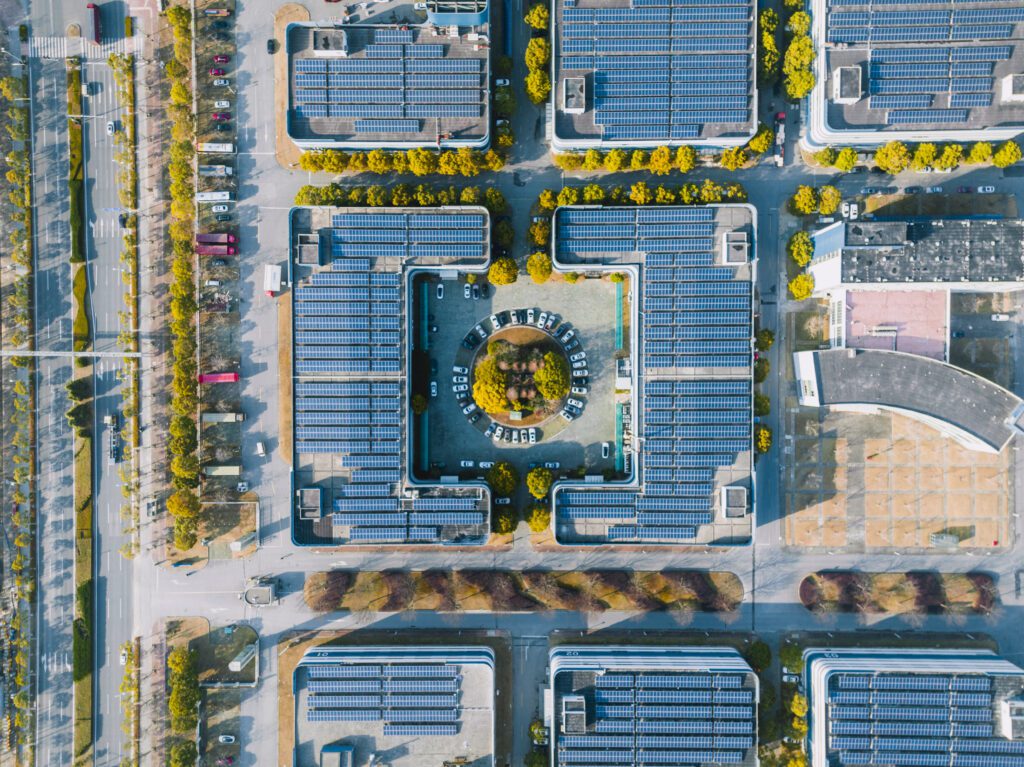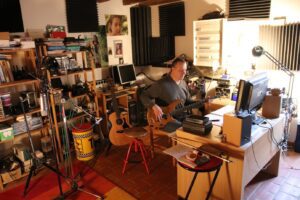It may be hard to believe, but 90% of our time is spent indoors. For commercial buildings, that translates to 30% of global energy consumption. This provides tremendous opportunities for reducing our carbon footprint and improving energy efficiency. From the growth of energy storage to the influence of government policies, we foresee that the road to decarbonization will be winding and likely filled with promise and pitfalls.

Baseball great Yogi Berra once said, “It’s tough to make predictions, especially about the future.” While I agree with this sentiment in many contexts, I believe that with today’s advanced technologies and cutting-edge analytics, we can definitely ballpark the future. At C&C Group, we’ve built our business with pride by staying on the cutting edge of emerging technology and practices. We’ve listened and learned from our customers, and what they need for future resilience. So we are starting to see emerging trends. Let’s explore some of the pragmatic predictions about what we’re learning and how we can proactively address the challenges that lie ahead.
Prediction 1: We won’t have enough skilled trades
Our power grids are getting more complex, and our net-zero commitments drive for more distributed energy sources. This, in turn, is generating higher demand for skilled tradespeople like electricians. Because of this, electricians will probably have the biggest role in transitioning our electrical infrastructure. We’ll need them to install devices that connect to the Internet of Things (IoT), support smart grids, and maintain renewable energy systems like solar panels and battery storage systems.
We can’t electrify without electricians. But skilled tradespeople are retiring in what’s known as a silver tsunami – leaving a big experience gap in their wake. And fewer young people are entering trade roles. In fact, less than 17% of high school and college students plan to work in the construction industry. And few electricians lead to higher costs and more delays. At C&C Group, we’re tackling this by reaching out to schools, offering internships, and mentoring programs to engage students in this type of work.
Prediction 2: We’ll face headwinds in some regions
It took 40 years for the US to reach one million solar installations by 2016, while the next million took only three years. It’s great progress, but there are regions where growth is slower. For example, in the American Midwest, electricity costs are still relatively low. So the initial outlay for installing renewable infrastructure can seem steep.
But here’s where it gets interesting. Traditional energy sources might be inexpensive now, but they come with many tangible and intangible costs down the line:
- Regulatory risks: noncompliance with strict carbon emission regulations can result in heavy fines and penalties.
- Loss of competitive advantage: choosing not to invest in sustainable practices means missing out on shared value opportunities for innovation and cost savings.
- Reputation damage: ignoring sustainability can lead to loss of customer trust, lower sales, and difficulties attracting investments.
We’re looking at strategies to tackle these roadblocks. Renewable energy is an investment in a more sustainable and healthy future, and educating people on this will shift perceptions. Government incentives can make a big difference and help offset the initial investment in renewable technologies. Plus, as these technologies continue to improve, the costs associated with producing and storing renewable energy will keep dropping. That’s a game-changer for the road to decarbonization.
Prediction 3: Projects will be increasingly linked to decarbonization outcomes and building-integrated renewable energy
As the renewable energy transition picks up speed, more of our projects will have decarbonization outcomes tied to them.
We’ve seen that investors are becoming more inclined to support projects that promote on-site renewable energy projects or enhance building energy efficiency. They’re starting to see the importance and long-term benefits of sustainability and decarbonization investments. And they are incorporating more efficient processes, such as replacing fossil fuel-powered furnaces and other equipment with electric alternatives like heat pumps and renewable energy that greatly reduce carbon emissions.
Widespread adoption of renewable energy sources on buildings, such as solar panels and wind turbines, also requires overcoming cost barriers, aesthetic considerations, and regulatory hurdles.
Prediction 4: Behavioral changes will come into focus
There’s another critical element to decarbonization: People.
Meeting our targets is more than just a job for the big players in government and industry. It’s a team effort. We need to get smarter about how we consume energy, be more mindful of our daily energy usage, and start changing behaviors. For example, switching off lights when rooms are unoccupied, utilizing natural daylight, and adjusting HVAC settings for vacant rooms. Sounds simple and intuitive, right? You’d be surprised at the business impact this simple step makes.
Importantly, the technology exists for us to monitor our results in real-time and have those results accessible to everyone. We’re developing better user interfaces where building occupants can see energy usage and savings in real-time and finding that it’s a huge behavior modifier when you can see those immediate results. For example, Aspiria’s real-time visibility allowed them to be energy conscious and ultimately saved them over $700,000 in one year.
Prediction 5: Energy storage will grow quickly
Energy storage is becoming a necessity in our power systems. It ensures we can access electricity even when the sun isn’t shining or the wind blowing. These systems also act like a buffer, absorbing excess power generated during peak production times and releasing it when demand outstrips supply. Over the next few years, we will see a big increase in this area.
In fact, it’s already happening. The US had triple the amount of energy storage installed in the second quarter of this year compared to the preceding quarter. Energy storage installations worldwide are projected to reach 411 gigawatts by the end of 2030.
These are promising developments and are fantastic opportunities for us to tap into the value side of sustainable energy and incorporate it into our building business.
Prediction 6: Government policies will continue to influence
On the policy front, government programs and international agreements significantly influence the pace and scale of decarbonization. Companies today face financial challenges, tariffs, and regulatory requirements (which might include fines for non-compliance) to reduce their carbon footprints.
We’ve observed instances at both local and multinational levels worldwide where tangible repercussions have been implemented for failing to meet carbon reduction targets. Notably, the European Parliament has recently endorsed its stance on the Energy Performance of Buildings Directive, signaling a groundbreaking recognition of buildings as significant contributors to climate change by a major governmental body. There’s a growing need for education around these issues, and convincing people about the importance of energy reduction is vital.
Prediction 7: Data-driven decision-making
We’re already living in an era of smart meters, smart panels, IoT devices, and advanced sensor technology – all of which generate a mountain of data. Adopting building analytics to enhance building performance and energy efficiency can provide building owners with a clear roadmap for their endeavors. There is also a big opportunity for creating innovative new applications and net zero scenarios.
We’re starting to combine systems and process data in new ways to reduce carbon footprint. For example, a building with a renewable energy installation can balance supply and demand more efficiently, thereby reducing waste and lowering costs. These systems can also optimize their energy output based on predictable patterns and weather data.
Smart buildings and factories can leverage this convergence and operate with little human intervention. The convergence of data has also been identified as a key trend for 2023 and beyond.
The path to a decarbonized future
I’m optimistic about achieving a decarbonized future. There will be challenges, but I am very fortunate that C&C Group works with Schneider Electric, and we can leverage their expertise with our customers on their path to net-zero buildings.
I’m also proud of our strong employee and leadership commitments to address these issues. Our people have never been afraid to dig in and make that extra effort to help our customers work towards their net zero goals. We can effectively navigate these challenges by focusing on practical solutions, shared insights, and open communication to create a more sustainable future.
Learn more about C&C Group’s work on Aspiria’s campus of the future, the partnership between C&C Group and Schneider Electric, and how this project also added value to other channel partners.
EcoXperts are the enablers of net-zero buildings
The EcoXpert Partner Program is unique in its industry and made up of a best-in-class, global ecosystem of expertise. Trained and certified by Schneider Electric, EcoXpert partners digitize and electrify our world for a more sustainable future.
The path to net zero is about delivering solutions for sustainable, resilient, efficient, and people-centric buildings. For our EcoXpert partners, this unveils immense growth opportunities through the transition to end-to-end portfolio sales that will resolve our customers’ most critical needs. For our shared customers, this means that together with our EcoXpert partners, we will drive the building industry transformation and help our customers survive and thrive today – and tomorrow.
Visit the EcoXpert webpage to learn more.



